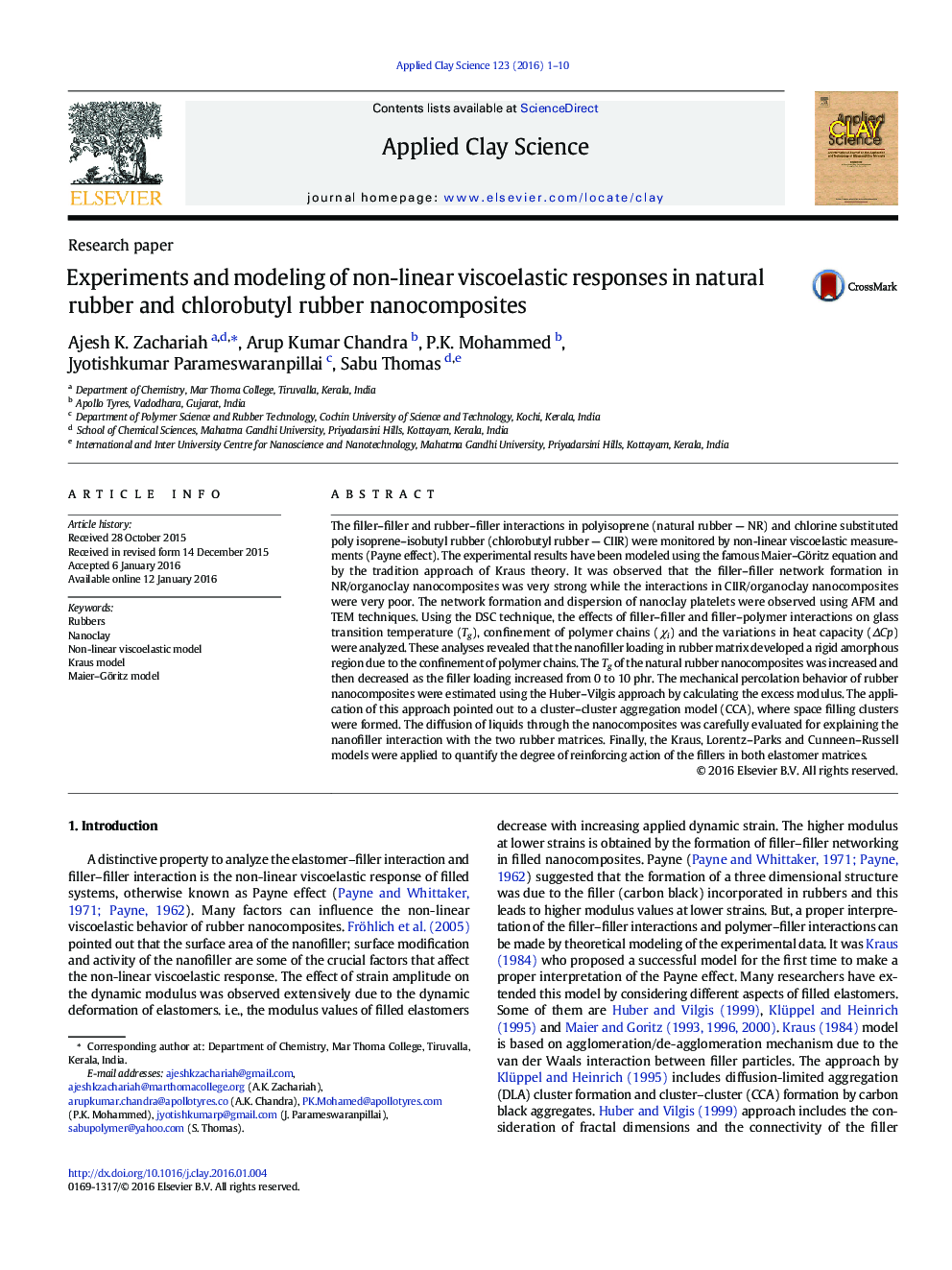| Article ID | Journal | Published Year | Pages | File Type |
|---|---|---|---|---|
| 1694111 | Applied Clay Science | 2016 | 10 Pages |
•Filler–filler and filler–polymer interactions of rubber nanocomposites•Kraus and Maier–Göritz phenomenological nonlinear viscoelastic models•The Huber–Vilgis method of mechanical percolation behavior — excess modulus values•The rubber–nanofiller interactions — characterization by the swelling studies•Reinforcing ability of nanoclays — Kraus, Lorentz-Parks and Cunneen–Russell models
The filler–filler and rubber–filler interactions in polyisoprene (natural rubber — NR) and chlorine substituted poly isoprene–isobutyl rubber (chlorobutyl rubber — CIIR) were monitored by non-linear viscoelastic measurements (Payne effect). The experimental results have been modeled using the famous Maier–Göritz equation and by the tradition approach of Kraus theory. It was observed that the filler–filler network formation in NR/organoclay nanocomposites was very strong while the interactions in CIIR/organoclay nanocomposites were very poor. The network formation and dispersion of nanoclay platelets were observed using AFM and TEM techniques. Using the DSC technique, the effects of filler–filler and filler–polymer interactions on glass transition temperature (Tg), confinement of polymer chains (χi) and the variations in heat capacity (ΔCp) were analyzed. These analyses revealed that the nanofiller loading in rubber matrix developed a rigid amorphous region due to the confinement of polymer chains. The Tg of the natural rubber nanocomposites was increased and then decreased as the filler loading increased from 0 to 10 phr. The mechanical percolation behavior of rubber nanocomposites were estimated using the Huber–Vilgis approach by calculating the excess modulus. The application of this approach pointed out to a cluster–cluster aggregation model (CCA), where space filling clusters were formed. The diffusion of liquids through the nanocomposites was carefully evaluated for explaining the nanofiller interaction with the two rubber matrices. Finally, the Kraus, Lorentz–Parks and Cunneen–Russell models were applied to quantify the degree of reinforcing action of the fillers in both elastomer matrices.
